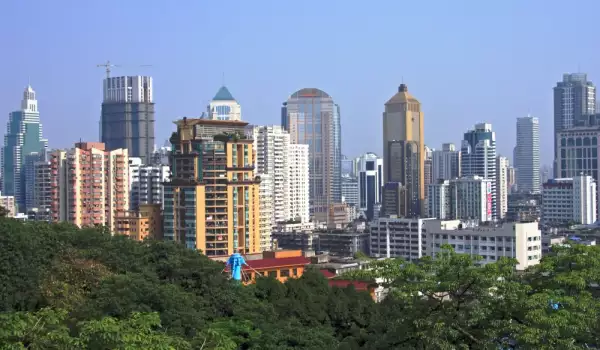Nanjing

Nanjing is known as "the old capital of ten dynasties". In the long history of the Chinese Empire, this strategically located city was repeatedly elected to the seat of the emperor. Even the name Nanjing means "southern capital". The city is located and is the capital of Jiangsu Province, which is one of the most attractive destinations for tourists in Asia. Extending about 900 km along the eastern coast of the China Yellow Sea led by Jiangsu, Nanjing city offers a huge cultural and historical heritage combined with natural beauty and economic progress.
By the middle of last century, it was known as Nanking, but in 1950 a language reform changed the pronunciation. Nanjing is recognized as one of four historical capitals of China, along with Beijing, Luoyang and Changan. For several historical periods and more than 10 kingdoms, Nanjing is the capital of China.
Nanjing is located 300 km west of Shanghai and 1200 km south of Beijing, on the banks of the Yangtze River and its delta, which has built a large and modern port accessible to sea and river ships. Nanjing in 2008 was ranked by "Forbes" among the 100 largest business centers. It has a total area of 6598 square kilometres and about 7, 713, 100 people. The area around Nanjing is very rich in natural resources, with operational extraction of more than 40 types of minerals

Nanjing has a strategic location – it is secures by the river to the north and east by mountains, which in the course of history makes it a natural center of political, economic and spiritual life of China. The last time Nanjing was the capital of the country was before the Civil War in China, in 1949. Shortly before that time the town's history is marked by many bloody battles, the most important is called the Slaughter in Nanjing when the Japanese Army massacred 300, 000 Chinese people - women, children, sick people in the centers of the Red Cross. After 1949, the capital of China is moved back to Beijing.
The millennial history of Nanjing is a prerequisite for the great architectural and cultural heritage of the city. The city has always been a cultural center that attracts intellectuals from across the country. Over the centuries, here are found poets, singers, artists, writers and more. The library was founded in Nanjing in 1907 and contains more than 7 million printed volumes, making it the third largest library in China. Here are concentrated some of the oldest and best museums in the country. The Museum of Nanjing is the first museum of Modern Art.
Among the most prominent sights of Nanjing are the tombs of the Ming Dynasty, which are listed as an UNESCO World Heritage Site. Be sure to walk along the Qin Huai River, which is a branch of the Yangtze. On its shores are great monuments like the Temple of Confucius, and many beautiful gardens. One of the emblems of the Nanjing City is the City Wall of Nanjing, established more than 600 years ago and The Gate of China, which is considered the southern gateway to the country.
Particularly attractive are the ruins of the Ming Dynasty Imperial Palace, located in the park Wuchaomen, the Presidential Palace, 6-mile bridge over the Yangtze River and the famous Jiming Temple, in the center of Nanjing.
In the once capital, in the 15th century, the Ming Dynasty built an incredible pagoda, known as the Porcelain Tower of Nanjing. Considered one of the wonders of the medieval world, this tower was totally destroyed around 1856, but today is in the process of re-construction. It is similar to Memorial Tower, known as the Linggu Temple.







